TL;DR
For an inexpensive, DIY curb appeal boost in Amarillo: add 2–3 well-placed shade trees, a curved paver or decomposed granite walkway, drought-tolerant native planting set off the foundation, and warm solar lighting—then test it all in ReimagineHome.ai before you buy a single bag of gravel. Start with shade and paths, then layer beds, lighting, porch paint, and planters.
2 sentences, 1 plan: TL;DR
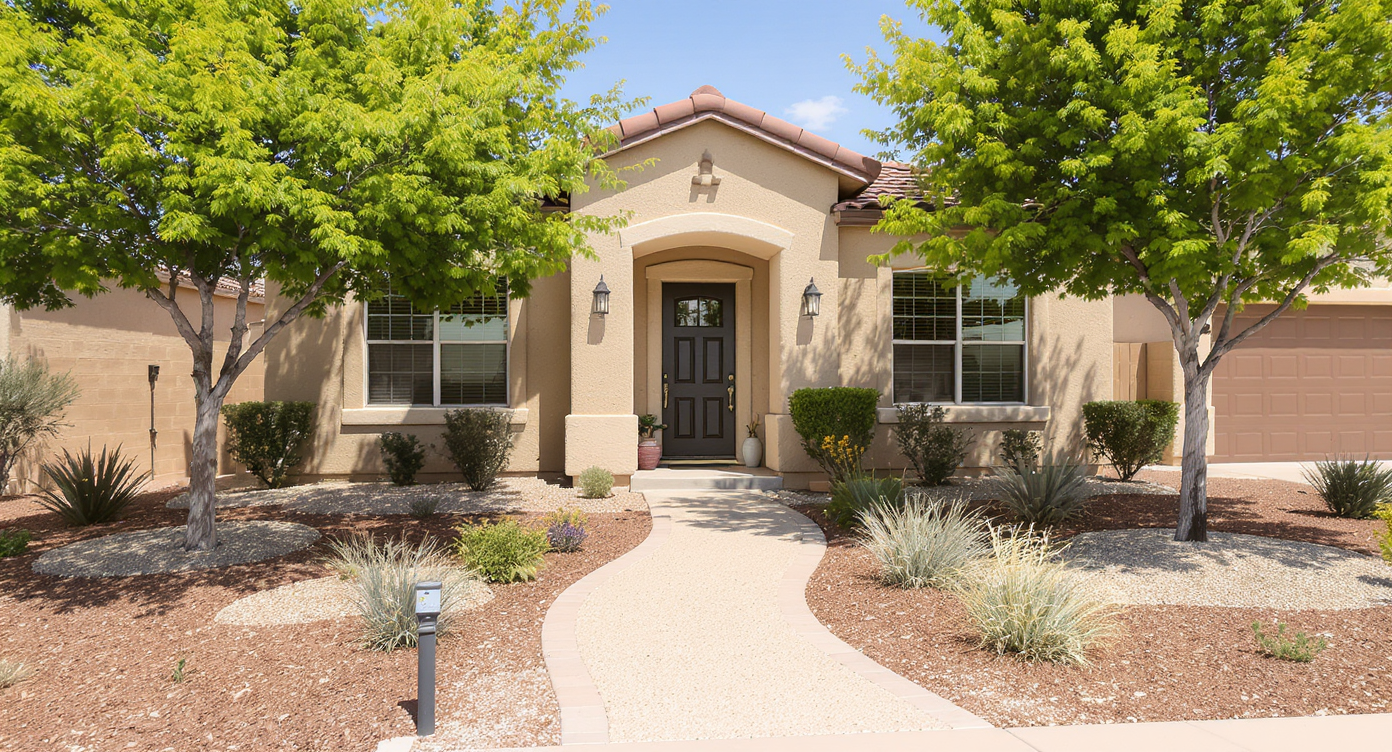
Visualize your Amarillo front yard makeover with shade, xeriscape, and walkways before you build.
For a West Texas front yard makeover on a budget, prioritize a curved walkway, drought-tolerant native plants, and 2–3 shade trees on the west/south sides to cool the house. Use ReimagineHome.ai to visualize materials, spacing, and planting layers on a photo of your home—so your DIY weekend goes exactly where it counts.
- At a Glance: Start with shade trees, a front walkway, and a low, tidy foundation bed.
- Amarillo Climate: Expect roughly 15–25 inches of annual rain; design for drought first, storms second.
- DIY Costs: Decomposed granite or gravel paths often run $2–5/sq ft; basic pavers $4–10/sq ft.
- Path Widths: 36–48 inches for a main walk; 24–30 inches for side connections.
- Low-Water Wins: Xeriscaping can cut outdoor water use by 50–75% with natives and mulch.
Try your own front-yard layout, walkway shape, and native planting plan on a photo of your space in ReimagineHome.ai.
15–25 inches of rain: Introduction to Amarillo curb appeal that lasts
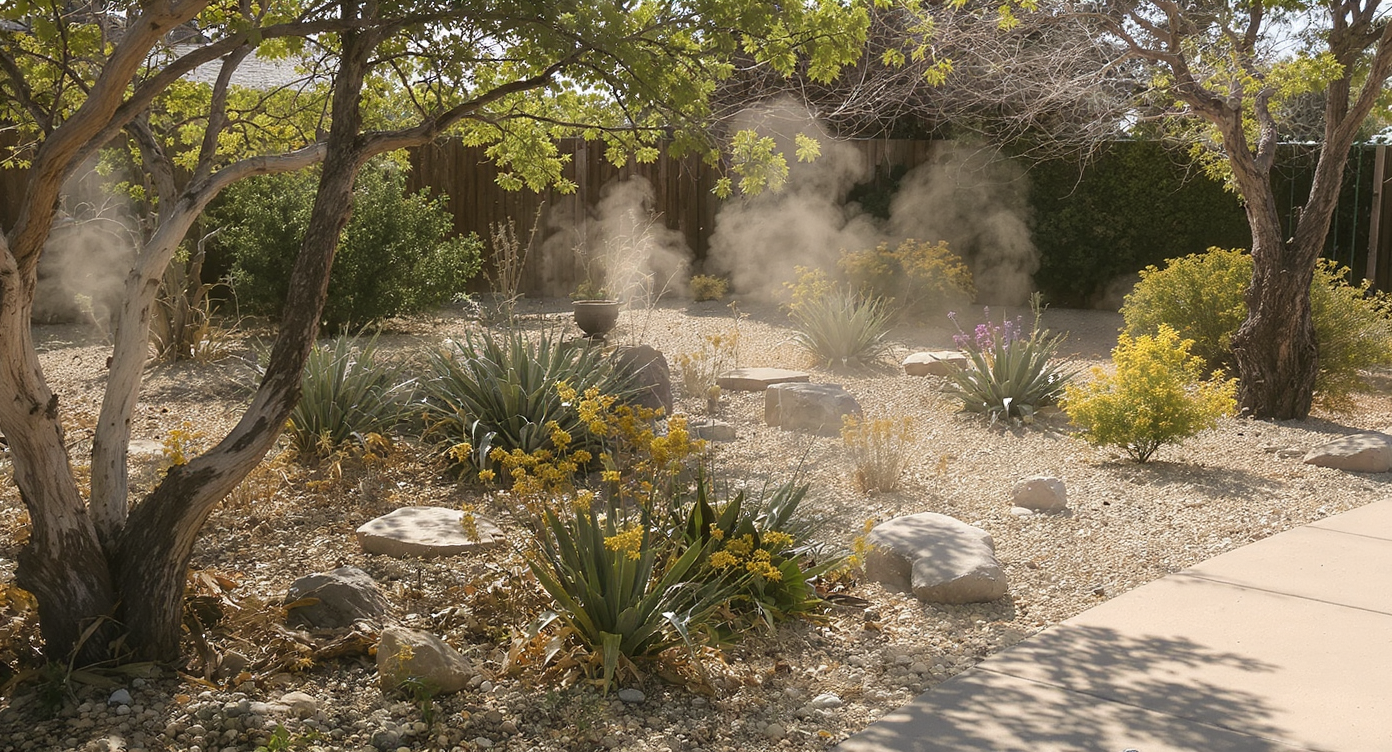
Design lasting curb appeal that thrives on 15–25 inches of Amarillo rain annual rainfall.
Amarillo’s sun, wind, and modest rainfall reward simple, resilient landscape design. The winning formula: a durable front walkway for everyday use, a few well-placed trees for energy-saving shade, and a small palette of native shrubs, grasses, and perennials that thrive with minimal irrigation. Add a bold front door color, two planters, and solar path lights for instant curb appeal.
For inspiration on placing trees so they enhance the architecture and hardscape, study this tree-planting and hardscape harmony playbook. It shows how canopy, paths, and entries work together—useful whether you’re choosing a single small ornamental or planning a long-term shade strategy.
Anecdote
A homeowner in Amarillo curved a decomposed granite path from the driveway to the door, added texas sage and blackfoot daisy inside the curve, and finished with a cobalt-blue front door—the entire project took a weekend and transformed the street view.
50–75% less water: Why xeriscaping and durable hardscaping are winning
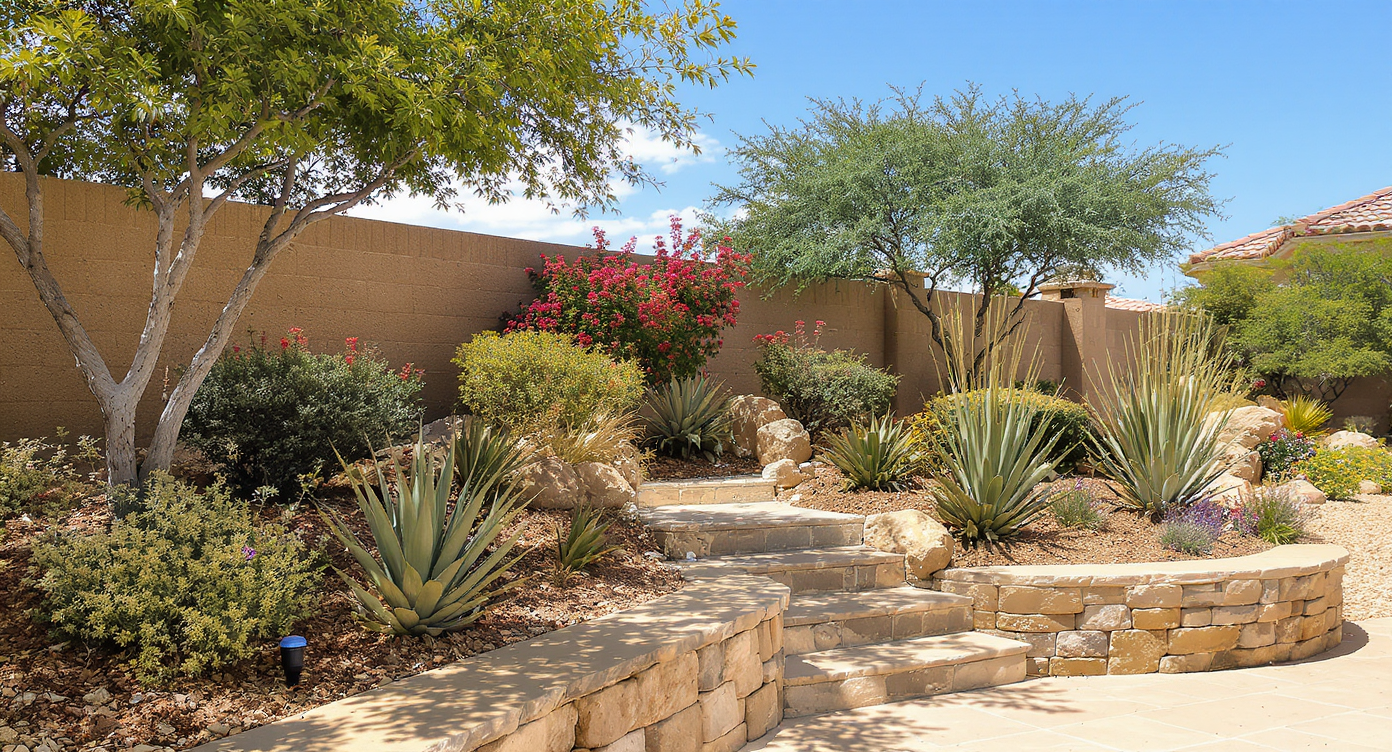
Xeriscaping and durable hardscaping cut water use by 50-75% in Amarillo yards.
Xeriscaping isn’t a style; it’s a smart water budget. In the Panhandle, drought-tolerant natives (think ceniza/texas sage, grasses like little bluestem, and salvias) paired with rock mulch or gravel look clean, resist weeds, and stand up to wind. Hardscape—pavers, decomposed granite, stepping stones, and boulders—adds structure that never needs watering.
Want a compact, front-yard blueprint you can adapt to your home’s light and orientation? Explore these small front yard landscaping strategies; even if your facade isn’t north-facing, the spacing rules, massing, and walkway ideas translate across orientations.
5 high-impact upgrades under $1,000: Key landscaping and hardscaping moves

Five affordable landscaping and hardscaping upgrades that make a big impact under $1,000.
36–48-inch clearance: Design a welcoming curved front walkway
Curving a path from driveway or street to the door softens a boxy facade and creates a natural planting pocket. DIY options: decomposed granite with steel edging; 16–24-inch concrete pavers set in sand; or budget-friendly stepping stones with gravel infill. Keep the main run 36–48 inches wide so two people can pass comfortably. Edge with native grasses for movement and mulch to reduce weeds.
2–3 trees placed west and south: Plant shade that pays you back
Deciduous shade trees on the west/south can reduce summer cooling loads by up to 20–30%. Choose species suited to your soils and wind, water deeply the first year, and stake only if necessary. A small ornamental near the front (offset from the door) adds scale; larger canopy in back or side yards provides afternoon relief.
18–24 inches off the foundation: Build a low-maintenance bed
Keep plants off the wall to prevent moisture issues and allow airflow. Layer heights: low groundcovers in front, knee-high shrubs or grasses mid-bed, and a taller anchor near a window edge. Limit yourself to 3–5 species for calm, modern landscaping; repeat for rhythm. Add one or two boulders for structure.
$2–5 per sq ft: Use gravel, decomposed granite, and boulders for texture
Stone is your low-cost, high-impact friend. In windy zones, pea gravel can travel—choose 3/8–3/4-inch crushed gravel or decomposed granite compacted over a base. Use steel or composite edging to keep lines crisp and maintenance low.
6–8 feet spacing: Layer solar path lighting for safety and glow
Warm-white fixtures (2700–3000 K) placed 6–8 feet apart along curves prevent runway lighting. Highlight the house number, entry, and a specimen plant. A fresh door color and two porch chairs complete the welcome.
1 photo, 5 minutes: How to use ReimagineHome.ai for your yard

Use ReimagineHome.ai with just one photo and five minutes to reimagine your yard layout and materials.
ReimagineHome.ai is a landscaping AI tool that lets you try materials, path shapes, and planting schemes on a photo of your house—no design software required. Here’s a quick flow:
- Upload: Snap your facade from the street so the door, windows, and walk area are visible.
- Choose: Test a stone patio, a curved decomposed granite path, and native planting palettes.
- Refine: Adjust front yard design elements—privacy planting, terrace levels, boulders, and edging.
- Decide: Compare versions with and without lawn; if you’re curious how turf would look in photos, see this digital lawn enhancement guide to visualize options before you commit.
Because the platform functions like an ai landscape generator, you can rapidly iterate walkway ideas, plant spacing, and outdoor lighting design until the facade feels balanced and welcoming.
Visualization Scenario
Upload a straight-on photo of your facade to ReimagineHome.ai, then iterate three versions: 1) decomposed granite path with grasses, 2) square pavers with gravel joints and two boulders, 3) a narrow lawn panel framed by native beds. Compare lighting and door color across all three before you buy materials.
6 fast answers homeowners search for
What’s the cheapest, durable front walkway?
Decomposed granite or compacted crushed gravel with steel edging typically runs $2–5/sq ft DIY and handles curves well.
How wide should my front walk be?
Plan 36–48 inches for the primary approach and 24–30 inches for secondary paths.
Where should I plant shade trees in Texas?
Place deciduous trees on the west and south sides to block afternoon sun; keep them well away from utilities and waterlines.
Can I xeriscape and still have color?
Yes—use blooming natives (salvias, four o’clocks, blackfoot daisy) and foliage contrast (texas sage, sotol, yucca), plus rock accents.
How close can plants be to my house?
Maintain 18–24 inches of clearance from the foundation for airflow and maintenance.
Do I need lawn at all?
No. Many Amarillo homes mix gravel, mulch, and native beds. If you’re undecided, compare lawn vs. no-lawn versions in ReimagineHome.ai before you buy materials.
24–48 hours to plan: Visualize your home’s next chapter
2 real yards, 1 weekend each: Micro-stories to borrow
An Amarillo homeowner laid a 42-inch-wide curved path using decomposed granite and steel edging, then tucked in texas sage and blackfoot daisy along the inside curve. With two porch chairs, a painted front door, and six solar lights, the house felt new—materials came in under $700.
In Lubbock, a small ranch swapped a straight, cracked sidewalk for 24-inch square pavers set in sand with gravel joints. Two small elms went in the side yard for afternoon shade. The owner used ReimagineHome.ai to compare paver colors against her brick and to test planting massing before digging.
7 preventable pitfalls: Common DIY mistakes and fixes
- Planting too close to the foundation: Maintain 18–24 inches of air space.
- Skimping on base prep: Compact 3–4 inches of base under paths to prevent ruts.
- Over-widening plant lists: Stick to 3–5 species and repeat.
- Ignoring wind: Choose heavier gravel and anchor taller plants.
- Forgetting downspouts: Direct stormwater to a rock swale, not beds.
- Lighting glare: Use shields and warm color temperatures.
- No maintenance plan: Schedule a 15-minute weekly tidy for weeds and debris.
10 pro moves under $200: Field-tested tips
- Pressure-wash the porch and walk; it’s the cheapest facelift.
- Paint the front door a saturated, UV-stable color.
- Add a mailbox or house numbers that match your metal finishes.
- Use steel edging for crisp curves.
- Mulch 2–3 inches deep to conserve moisture.
- Stagger stepping stones on 24–28-inch centers for a natural gait.
- Set planters at the posts to “thicken” the entry visually.
- Use drip irrigation on a simple timer for new plantings.
- Stage a small bench or rocker to signal welcome.
- Group three boulders (1 large, 2 small) for natural composition.
.svg)

.svg)



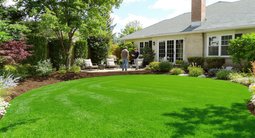
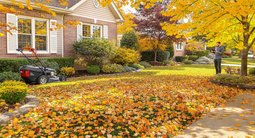


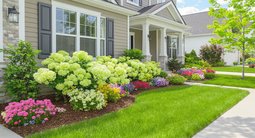






.png)